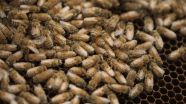(Press-News.org) Do blood vessels that feed tumors differ from other blood vessels? Fourteen years ago, experiments designed to answer that question led to the discovery of several genes that are more active in tumor-associated blood vessels than in normal blood vessels. New research now reveals the normal function of one of those genes and suggests it could be a good target for anticancer drug therapy.
A summary of the research appears in the journal Developmental Cell on Oct. 27.
The mystery of the gene, TEM5, began in 2000 with research conducted by Brad St. Croix, Ph.D., working in the laboratory of Bert Vogelstein, M.D., a Howard Hughes Medical Institute investigator and the Clayton Professor of Oncology, and Kenneth Kinzler, Ph.D., professor of oncology at the Johns Hopkins University School of Medicine. The researchers compared gene activity in normal blood vessels to those infiltrating colorectal tumors. Among other differences were nine genes that were highly active in the tumor-associated blood vessels, which the researchers dubbed tumor endothelial marker (TEM) 1 through 9. (Endothelial refers to the type of cell that makes up blood vessels.)
Over the ensuing decade, further experiments revealed clues regarding the function of individual TEMs. By 2010, it was known that mice missing TEM5, also known as GPR124, have defective blood vessel growth in the brain and spinal cord. The mice also showed defective formation of the blood-brain barrier, the molecular "wall" crucial to protecting the brain. These findings piqued the interest of Jeremy Nathans, M.D., Ph.D., a Howard Hughes investigator and professor of molecular biology and genetics, neuroscience, and ophthalmology at the Johns Hopkins University School of Medicine, who had been studying blood vessel growth in the eye, brain and spinal cord.
The TEM5 protein was known to be located in the outer membrane of cells, likely receiving signals from outside the cell and passing information on to a network of proteins inside the cell. But it wasn't known what signal it responds to and which protein network it connects to.
Nathans and graduate student Yulian Zhou's first clue was that the blood vessel defects in mice missing TEM5 looked similar to the defects found in mice that were missing two members of the Wnt (pronounced "Wint") family of signaling proteins, a well-known group of 19 related proteins used for communication between cells. Using cells grown in the laboratory, Zhou tested each of the 19 known Wnt proteins and found that only two of them can activate TEM5. Remarkably, they were the same two Wnt proteins previously found to play an essential role in blood vessel development in the brain and spinal cord.
To test whether TEM5 uses the "Wnt" signaling system in blood vessels, the researchers artificially activated this system specifically in blood vessel cells in mice lacking TEM5. The blood vessel defects disappeared, confirming the relationship between TEM5 and Wnt.
Nathans says that TEM5 might be a good target for cancer therapy because — although TEM5 is crucial for embryonic blood vessel development — mice do well if TEM5 is eliminated after birth. Nathans also suggests that temporarily disabling Wnt signaling in blood vessels might be used to improve drug treatment of brain diseases. Some potentially effective drugs cannot be used for treating brain diseases because they cannot cross the blood-brain barrier. Temporarily disabling that barrier might allow these drugs to gain access to the brain.
INFORMATION:
This work was supported by grants from the National Eye Institute (EY018637), the Ellison Medical Foundation and the Howard Hughes Medical Institute.
On the Web:
View the article in Developmental Cell. http://dx.doi.org/10.1016/j.devcel.2014.08.018
Visit the Nathans Lab's website. http://nathanslab.mbg.jhmi.edu/
Blood vessel growth in the brain relies on a protein found in tumor blood vessels
Solution to 14-year mystery has implications for cancer therapies and drug delivery
2014-10-27
ELSE PRESS RELEASES FROM THIS DATE:
Using microscopic bugs to save the bees
2014-10-27
For decades, honeybees have been battling a deadly disease that kills off their babies (larvae) and leads to hive collapse. It's called American Foulbrood and its effects are so devastating and infectious, it often requires infected hives to be burned to the ground.
Treating Foulbrood is complicated because the disease can evolve to resist antibiotics and other chemical treatments. Losing entire hives not only disrupts the honey industry, but reduces the number of bees for pollinating plants.
Now researchers at BYU have produced a natural way to eliminate the scourge, ...
Group classes teach parents effective autism therapy, Stanford/Packard study finds
2014-10-27
Parents can learn to use a scientifically validated autism therapy with their own children by taking a short series of group classes, a new study by researchers at the Stanford University School of Medicine and Lucile Packard Children's Hospital Stanford has found.
The therapy helped children improve their language skills, an area of deficiency in autism, according to the study, which will be published Oct. 27 in the Journal of Child Psychology and Psychiatry. The study is the first randomized, controlled trial to test whether group classes are a good way to train parents ...
A GPS from the chemistry set
2014-10-27
You don't always need GPS, a map or a compass to find the right way. What demands a tremendous amount of computational power from today's navigation computers can also be achieved by taking advantage of the laws of physical chemistry and practicing so-called "chemical computing". The trick works as follows: A gel mixed with acid is applied at the exit of a labyrinth – i.e. the destination – filled with alkaline liquid. Within a shorttime, the acid spreads through the alkaline maze, although the majority of it remains together with the gel at the exit. When an ...
The chemistry of death (video)
2014-10-27
WASHINGTON, Oct. 27, 2014 — It's a spooky question, but it doesn't have to be: What happens when you die? Even after you depart, there's a lot of chemistry that still goes on inside you. Reactions teamed up with mortician Caitlin Doughty, author of the new book "Smoke Gets in your Eyes, and Other Lessons from the Crematory" to demystify death and talk about exactly what happens to the body postmortem. Check out the new episode here: http://youtu.be/BpuTLnSr_20.
Subscribe to the series at Reactions YouTube, and follow us on Twitter @ACSreactions to be the first to ...
Taxi GPS data helps researchers study Hurricane Sandy's effect on NYC traffic
2014-10-27
When Hurricane Sandy struck the east coast in late October 2012, the "superstorm" disrupted traffic in New York City for more than five days, but the evacuation proceeded relatively efficiently with only minor delays, according to transportation researchers at the University of Illinois. The largest Atlantic hurricane on record, Hurricane Sandy offered a chance for researchers at the University of Illinois at Urbana-Champaign to try out a new computational method they developed that promises to help municipalities quantify the resilience of their transportation systems ...
Leading medical groups urge Congress to stop steep Medicaid cuts
2014-10-27
WASHINGTON, DC—The American Academy of Pediatrics (AAP), American Academy of Family Physicians (AAFP), American College of Physicians (ACP) and American Osteopathic Association (AOA) convene today in Washington, DC to urge Congress to extend current-law payment parity for primary care and immunization services under Medicaid for at least two years. Absent congressional action, federal support for this policy runs out at the end of the year. Collectively representing nearly 423,000 physicians, the four groups are meeting with dozens of congressional offices on Capitol ...
Which US airports are breastfeeding friendly?
2014-10-27
New Rochelle, NY, October 27, 2014—More than half of women with children less than a year old are working, and work travel can make breastfeeding a challenge. A study of 100 U.S. airports found that few provided a suitably equipped, private lactation room, even though most described themselves as being breastfeeding friendly, as reported in Breastfeeding Medicine, the official journal of the Academy of Breastfeeding Medicine published by Mary Ann Liebert, Inc., publishers. The article is available free on the Breastfeeding Medicine website at http://online.liebertpub.com/doi/full/10.1089/bfm.2014.0112 ...
A key to aortic valve disease prevention: Lowering cholesterol early
2014-10-27
This news release is available in French. A key to aortic valve disease prevention: Lowering cholesterol early
Montreal, Sunday 26, 2014 – An international research team led by the Research Institute of the McGill University Health Centre (RI-MUHC) and Lund University has provided new evidence that aortic valve disease may be preventable. Their findings show that so-called "bad" cholesterol or low-density lipoprotein-cholesterol (LDL-C) is a cause of aortic valve disease – a serious heart condition that affects around five million people in North America ...
Thermodiffusion in weightlessness
2014-10-27
New York | Heidelberg, 27 October 2014 Thermodiffusion, also called the Soret effect, is a mechanism by which an imposed temperature difference establishes a concentration difference within a mixture. Two studies1,2 by Belgian scientists from the Free University of Brussels, recently published in EPJE, provide a better understanding of such effects. They build on recent experimental results from the IVIDIL (Influence Vibration on Diffusion in Liquids) research project performed on the International Space Station under microgravity to avoid motion in the liquids.
In the ...
CWRU researcher finds training officers about mental illness benefits prison's safety
2014-10-27
Case Western Reserve University mental health researcher Joseph Galanek spent a cumulative nine months in an Oregon maximum-security prison to learn first-hand how the prison manages inmates with mental illness.
What he found, through 430 hours of prison observations and interviews, is that inmates were treated humanely and security was better managed when cell block officers were trained to identify symptoms of mental illness and how to respond to them.
In the 150-year-old prison, he discovered officers used their authority with flexibility and discretion within ...
LAST 30 PRESS RELEASES:
New expert guidance urges caution before surgery for patients with treatment-resistant constipation
Solar hydrogen can now be produced efficiently without the scarce metal platinum
Sleeping in on weekends may help boost teens’ mental health
Study: Teens use cellphones for an hour a day at school
After more than two years of war, Palestinian children are hungry, denied education and “like the living dead”
The untold story of life with Prader-Willi syndrome - according to the siblings who live it
How the parasite that ‘gave up sex’ found more hosts – and why its victory won’t last
When is it time to jump? The boiling frog problem of AI use in physics education
Twitter data reveals partisan divide in understanding why pollen season's getting worse
AI is quick but risky for updating old software
Revolutionizing biosecurity: new multi-omics framework to transform invasive species management
From ancient herb to modern medicine: new review unveils the multi-targeted healing potential of Borago officinalis
Building a global scientific community: Biological Diversity Journal announces dual recruitment of Editorial Board and Youth Editorial Board members
Microbes that break down antibiotics help protect ecosystems under drug pollution
Smart biochar that remembers pollutants offers a new way to clean water and recycle biomass
Rice genes matter more than domestication in shaping plant microbiomes
Ticking time bomb: Some farmers report as many as 70 tick encounters over a 6-month period
Turning garden and crop waste into plastics
Scientists discover ‘platypus galaxies’ in the early universe
Seeing thyroid cancer in a new light: when AI meets label-free imaging in the operating room
Neutrophil-to-lymphocyte ratio may aid risk stratification in depressive disorder
2026 Seismological Society of America Annual Meeting
AI-powered ECG analysis offers promising path for early detection of chronic obstructive pulmonary disease, says Mount Sinai researchers
GIMM uncovers flaws in lab-grown heart cells and paves the way for improved treatments
Cracking the evolutionary code of sleep
Medications could help the aging brain cope with surgery, memory impairment
Back pain linked to worse sleep years later in men over 65, according to study
CDC urges ‘shared decision-making’ on some childhood vaccines; many unclear about what that means
New research finds that an ‘equal treatment’ approach to economic opportunity advertising can backfire
Researchers create shape-shifting, self-navigating microparticles
[Press-News.org] Blood vessel growth in the brain relies on a protein found in tumor blood vesselsSolution to 14-year mystery has implications for cancer therapies and drug delivery



